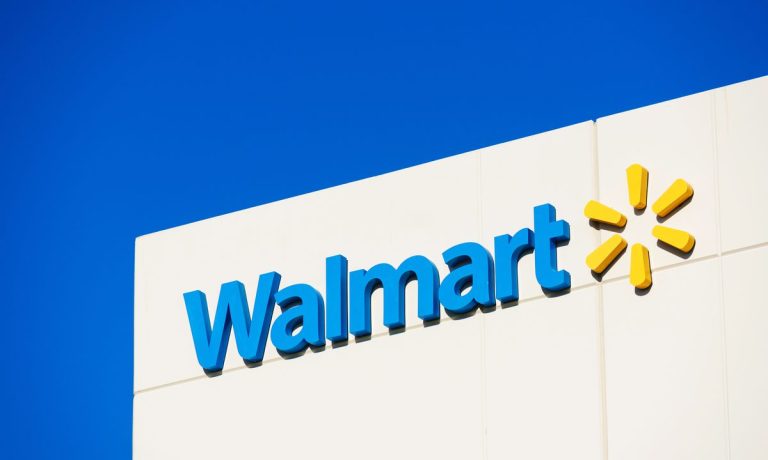
Walmart largely benefitted from consumers’ increased vaccination rates in the second quarter, reporting higher-than-expected revenue and increased grocery sales despite difficult year-over-year comparisons and increased concern about the COVID-19 Delta variant.
Like Amazon, the Arkansas-based box store king saw decelerating eCommerce sales for the three months ended July 31, though that meant more consumers coming into Walmart locations — a luxury that Amazon does not enjoy.
“No matter how customers want to shop, we’re here for them,” Chief Financial Officer Brett Biggs told investors and analysts on a conference call. “In some periods, in-store shopping will lead the way, and in some, eCommerce will lead the way.”
Readers also liked: Amazon Sees Decelerating Sales As Post-Lockdown Life Resumes
Last month, Amazon reported a rare quarterly earnings sales miss and lackluster third quarter projections, which Chief Financial Officer Brian Olsavsky attributed to moderated spending from Prime members and consumers’ increased mobility as vaccination rates rise. The eCommerce giant reported $113 billion in net sales over the three months ending June 30.
Officially, Walmart’s total revenue in the second quarter was $141 billion, up 2.4 percent year over year, with net sales of nearly $140 billion, up 2.2 percent. In the U.S., Walmart saw just over $98 billion in net sales, up 5.3 percent, and a 6 percent growth in eCommerce sales.
CEO Doug McMillon said Walmart’s global eCommerce sales are on track to reach $75 billion by the end of the year. For the full fiscal year, Walmart is expecting comp sales of 5 percent to 6 percent, representing about $20 billion of growth.
“Almost six years ago now, we talked about that we need to take the opportunity to invest in wages and eCommerce, and we were a little bit behind where we wanted to be in some areas,” Biggs said. “And now, when we invest, it feels very offensive.”
McMillon noted that Walmart’s business overall is becoming more digital and focused on omnichannel as the mindset across the company changes. Over the last 18 months, Walmart has built out more capacity for buy online, pickup in-store (BOPIS) as well as the ability to quickly ship items purchased online from fulfillment centers, stores, or a combination of the two depending on where inventory is located.
“We are learning very quickly how to use our supply chain assets — including local assets, upstream assets, distribution assets — very dynamically to be able to move product and assemble orders in a way that is most efficient to meet the customer,” Biggs said.
The Future Of Walmart+
McMillon also said that Walmart grew its U.S. grocery market share in the second quarter, with comp sales up 6 percent compared to last year; grocery sales increased by low-single digits on a two-year stacked basis.
Grocery accounts for over 56 percent of Walmart’s total sales and is the key driver of many Walmart+ signups, with the box store giant having a 10-to-1 advantage in grocery over Amazon. Still, Karen Webster predicted last month that it’s Amazon’s gain in non-grocery retail that will push the company to become America’s largest retailer next year.
See more: Can Walmart+ Save Walmart From Amazon?
“Part of the push comes from its growing share of Amazon Prime members who once typified Walmart’s core customer base: lower- and middle-income consumers, 90 percent of whom live within 15 minutes of a Walmart store,” Webster wrote. “If Prime Days are any indication, they appear to spend as much or more shopping online with Amazon as they do with Walmart.”
According to PYMNTS research, there were roughly 53.9 million Walmart+ subscribers in June, versus 171.4 million Amazon Prime members. Walmart executives were largely quiet about how the subscription service is doing but hinted that one potential avenue of expansion for Walmart+ is bringing food and health data together for consumers.
“I think the future of Walmart+ just is kind of this continuous burn for us where we add things to it and it becomes even more unique to Walmart,” McMillon said. “Of course, delivery is a big part of it, but there’ll be other components, too.”
Managing Disruptions
Biggs said Walmart is seeing more cost inflation than normal — as is nearly every retailer — but the company has been working with suppliers and monitoring price gaps in an attempt to keep prices low. Walmart has also spent the last several months chartering vessels and securing supplies ahead of the second half of the year to ensure readiness for the third and fourth quarters and their respective shopping seasons.
Through July, Biggs said back-to-school shopping has been strong, and in the third quarter, Walmart expects that pattern to continue alongside a growth in grocery market share.
“I think we’re in good shape going into the third and fourth quarter,” McMillon said. “Of course, we’ll manage this the entire time, and look for strong results as we get into the third quarter.”